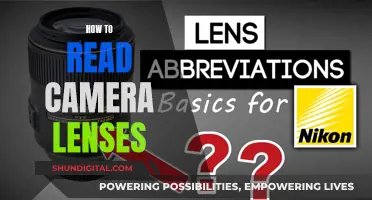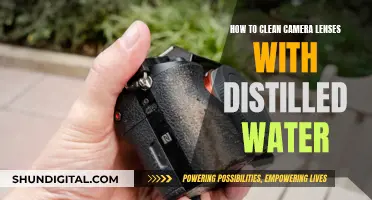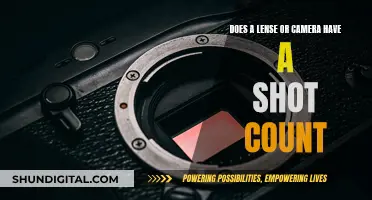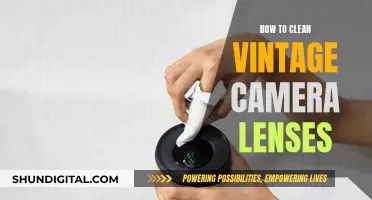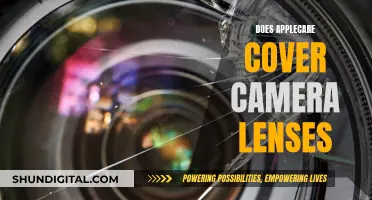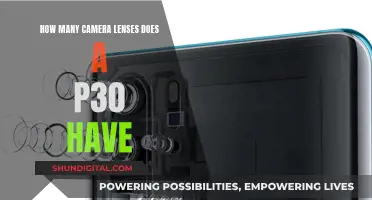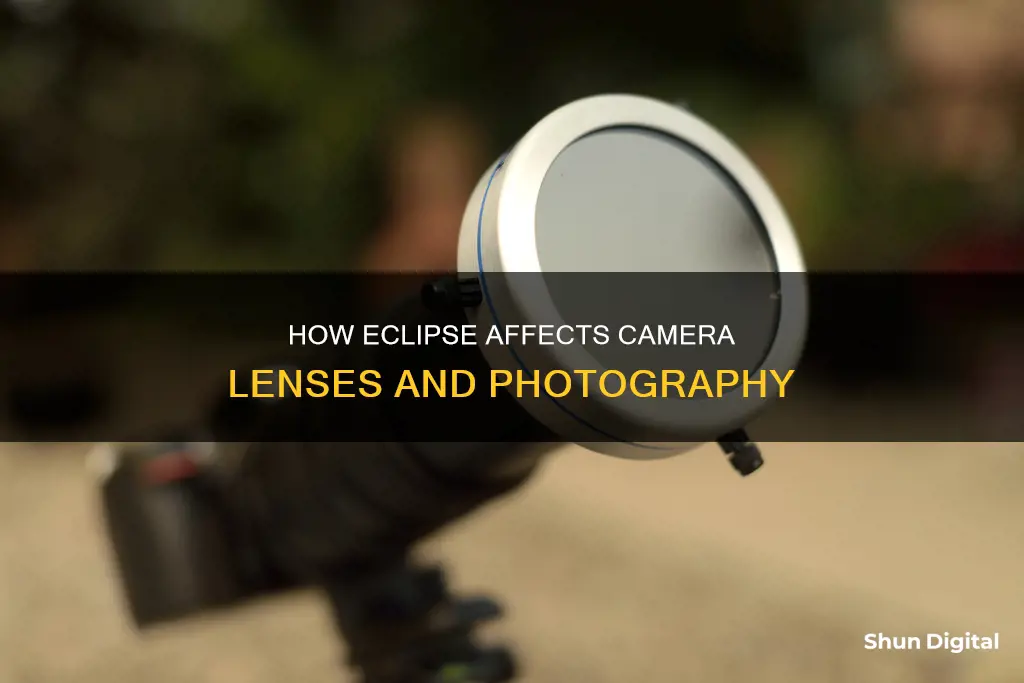
The solar eclipse is a breathtaking phenomenon that occurs when the moon passes between the sun and the Earth, blocking out its light. While witnessing this event can be awe-inspiring, it is important to take precautions to protect both your eyes and your camera equipment. Looking directly at the sun during an eclipse, even through a camera lens or viewfinder, can cause permanent damage to your eyes. Additionally, pointing your camera at the sun without proper protection can result in damage to the camera's internal elements, sensor, image stabilization mechanisms, and aperture mechanisms. To safely photograph a solar eclipse, it is crucial to use accredited and approved solar filters that fit over the front of your lens. These filters ensure that both your eyes and camera are shielded from the intense light and heat of the sun. By following the necessary safety measures, you can capture stunning images of a solar eclipse without risking harm to yourself or your equipment.
| Characteristics | Values |
|---|---|
| Can an eclipse damage a camera lens? | Yes, pointing a camera lens directly at an eclipse can damage the image sensor. |
| What about a phone camera? | Yes, the same applies to phone cameras. |
| How can you protect your camera/phone? | Use a solar filter or eclipse glasses over the lens. |
| When can you remove the filter? | During totality, when the sun is entirely blocked by the moon. |
| What else can you do? | Use an old camera, use a tripod, practice with the moon, use a remote shutter, etc. |
What You'll Learn

Using a phone camera to capture an eclipse
Capturing an eclipse with your phone camera can be tricky, but it is possible. Here are some tips to help you prepare and capture this rare event:
Prepare your equipment:
Firstly, it is essential to protect your eyes and your phone camera when viewing or capturing an eclipse. Standard phone cameras do not have the protective filters needed for safe solar photography, so you should never point your phone camera directly at the sun without protection. To protect your phone camera, you can purchase a sun filter for your phone lens, or you can hold a pair of eclipse glasses in front of your lens. Make sure the glasses are ISO 12312-2 certified, which is the international safety standard.
During the eclipse:
When the eclipse begins, you can use the eclipse glasses to reduce the light blooming in your photos by holding them close to your lens. When the skies darken and totality occurs, you can remove the glasses or filter as they are no longer needed. To focus your phone camera on the eclipse, use the focus lock feature by tapping and holding the screen until you see the AE/AF LOCK alert. You can also adjust your exposure by dragging your finger up or down near the sun icon to make your image brighter or darker.
Get creative:
While capturing the eclipse itself is the main goal, don't forget to document the moment beyond the sky. Try capturing the reactions of people around you or the crescent-shaped patterns of light on the ground. You can also use your phone's HDR (High Dynamic Range) and Night modes to enhance your photos, and don't be afraid to record a short video to capture the sound of the surrounding environment.
Stay safe:
Remember, there is no safe time to look at the sun without protection, not even during a partial eclipse or for a split second. The same goes for your phone camera. Always use proper eye protection and camera filters when viewing or capturing an eclipse, and never look at the sun through your phone screen without protection.
With these tips in mind, you'll be ready to capture the eclipse safely and effectively using your phone camera.
APS-C Lenses: Universal Fit for All Cameras?
You may want to see also

The dangers of pointing a camera lens at the sun
Pointing a camera lens at the sun can cause permanent damage to the camera's sensor. This is especially true if you're using any sort of magnifying lens attachment, such as zoom lenses, telescopes, or binoculars. The camera lens can act like a magnifying glass, focusing the sun's rays onto a small area of the shutter or aperture mechanism, potentially burning a hole. This effect can also cause the shutter mechanism to heat up and melt or catch fire.
Digital or video cameras with electronic sensors can suffer from "blooming" problems, where the sensor is overloaded and fails to record properly afterward. While this is only temporary in newer cameras, it can cause permanent damage in older models.
NASA and other experts strongly advise against pointing phone cameras directly at the sun, as the phone sensor can be damaged. They recommend using proper filters, such as eclipse glasses, to protect the camera lens when photographing the sun. Google's Pixel camera team also advises against pointing phone cameras at the sun for extended periods without a filter.
It is worth noting that the time of day and weather conditions can also play a role in the potential damage. Generally, pointing a camera at the bright midday sun is more harmful than doing so during sunrise or sunset, as the light is far less bright during these times. Overcast conditions can also reduce the potential for damage.
In summary, while it may be tempting to capture a photo of the sun or a solar eclipse, it is important to prioritize the safety of your equipment and your eyes. Always use proper filters and avoid prolonged exposure to direct sunlight to minimize the risk of damage to your camera lens and sensor.
Polarized Camera Lenses: Worth the Investment?
You may want to see also

The use of protective filters for your camera lens
Protective filters are typically made of glass and feature basic anti-reflective coatings. They are designed to keep the front element of your lens clean and safe. They protect the surface of your lens against scratches, dust, moisture, and fingerprints.
While some newer lenses are starting to feature Nano coating, which helps make the lens easier to clean and repels oil/water, a filter can add additional protection from these elements.
The difference between an inexpensive filter and a pricier one has to do with the quality of the glass (costlier filters tend to use purer and thinner glass), the quality of the anti-reflective and colour coatings, and the retaining ring (better filters have brass rings instead of aluminium).
Protective filters are particularly important if you're using any sort of magnifying lens like zoom lenses, telescopes or binoculars. They are also useful if you're shooting in adverse conditions, such as on a beach, where there might be sand or sea spray.
Some photographers, especially purists, feel that adding any piece of glass in front of the manufacturer's designed lens formula will reduce image quality. They prefer not to use filters at all.
Some photographers prefer to use lens hoods, which are designed to stop sunlight from falling on the glass from an oblique angle, which can fog your images and cause unwanted flaring. They can also protect the lens's front element against impact, falling rain, and accidentally rubbing against clothes.
Old Lenses, New Cameras: Is There Compatibility?
You may want to see also

The importance of eye protection when viewing an eclipse
Viewing an eclipse is an exciting and beautiful experience, but it is crucial to prioritize eye safety. Looking directly at the sun, even during an eclipse, can cause severe and permanent eye damage. Here's why eye protection is essential:
The Dangers of Solar Radiation
During an eclipse, the moon passes between the sun and the Earth, blocking the sun's light. Even when the moon partially blocks the sun, as in a partial eclipse, the sun's rays remain intense. There is no safe dose of solar ultraviolet rays or infrared radiation, and even a small exposure can be harmful. The risk of eye damage is present regardless of whether you are viewing the eclipse with your naked eyes or through a camera lens, binoculars, or a telescope.
Potential Eye Injuries
Viewing the sun without proper eye protection can lead to temporary or permanent vision damage. Solar retinopathy is the technical term for the condition caused by looking at the sun during an eclipse without protection. Symptoms of eye damage may include headaches, blurred vision, dark spots, and changes in color perception, lines, and shapes. Unfortunately, there is currently no treatment for solar retinopathy, and the damage can be permanent.
Safe Viewing Practices
To safely view an eclipse, it is essential to wear eclipse glasses that comply with the ISO 12312-2 international safety standard. Regular sunglasses are not sufficient, as they do not provide enough protection against the sun's rays. If you are using a camera, binoculars, or a telescope, do not look through the lens with your eclipse glasses on, as the concentrated solar rays can burn through the filter and cause eye damage. Instead, attach a special-purpose solar filter to the front of the optics to protect your eyes.
In conclusion, while witnessing an eclipse is a fascinating event, it is crucial to prioritize eye safety. The potential risks of eye damage are severe and can have long-lasting effects. By taking the necessary precautions, such as wearing eclipse glasses or using special solar filters, you can safely enjoy the beauty of an eclipse without compromising your vision.
Minolta Lenses: Universal Fit for Minolta Cameras?
You may want to see also

The best camera equipment for photographing an eclipse
It is important to note that looking directly at the sun through a camera, telescope, binoculars, or with the naked eye can be extremely harmful and may result in permanent damage to your vision. Similarly, the sun can also cause damage to your camera's image sensor. Therefore, it is crucial to take the necessary precautions when photographing an eclipse.
- Camera Type: Almost any digital camera can be used to photograph an eclipse, including DSLR, mirrorless, point-and-shoot, and film cameras. However, DSLR cameras offer more versatility and allow for interchangeable lenses, making them a popular choice.
- Lenses: A super telephoto lens is ideal for capturing close-up shots of the eclipse. The longer the focal length, the better. A focal length of around 800mm to 1200mm is recommended to get a good view of the eclipse without running into issues like constant reframing or cutting off the sun's corona. For wide-angle shots that capture the scene and surroundings, a wide-angle lens is a good option.
- Filters: It is crucial to use a solar filter when photographing a partial eclipse or the maximum phase of an annular eclipse. These filters protect your camera's sensor and ensure correct exposure. Full-aperture solar filters are recommended as they cover the entire front of the lens or telescope, eliminating the need for refocusing when the filter is removed during totality.
- Tripod: A sturdy tripod is essential for stabilising your camera, especially when using a super telephoto lens. It helps prevent camera shake and ensures sharp images.
- Remote Shutter Release: Although not necessary, a remote shutter release can be useful during totality when it gets darker, and your shutter speed drops, reducing the risk of camera shake.
- Astro Tracker: Instead of a ball head, consider using an astro tracker, such as the Sky-Watcher Star Adventurer, to easily track the eclipse without constantly adjusting your tripod head.
- Other Accessories: Other useful accessories include a geared head or a balanced gimbal, eclipse glasses for eye protection, and a pinhole camera or projector for safe viewing and creative photography techniques.
Remember to plan your shots, focus on accuracy, and don't forget to enjoy the moment. It may be a once-in-a-lifetime experience, so make it memorable, and don't get too caught up in the technicalities of photography.
How Camera Lenses Use Refraction to Capture Images
You may want to see also
Frequently asked questions
Experts advise against it. The sun's rays can overwhelm the sensors in your phone camera and cause damage.
Digital cameras, DSLRs, and mirrorless cameras are also susceptible to damage from the sun's rays. It is not recommended to point any camera directly at the sun.
You can use a solar filter over your camera lens to protect it from the sun's rays. These filters are designed to block UV and IR light beyond the visible spectrum.
Yes, you can hold a pair of ISO-certified eclipse glasses in front of your camera lens when taking pictures. However, this method may not be as effective as using a proper solar filter.
Yes, there are risks involved. The sun's rays can damage the camera's sensor, especially if you are using a telephoto lens or any type of magnifying lens. It is important to take the necessary precautions to protect your equipment.


